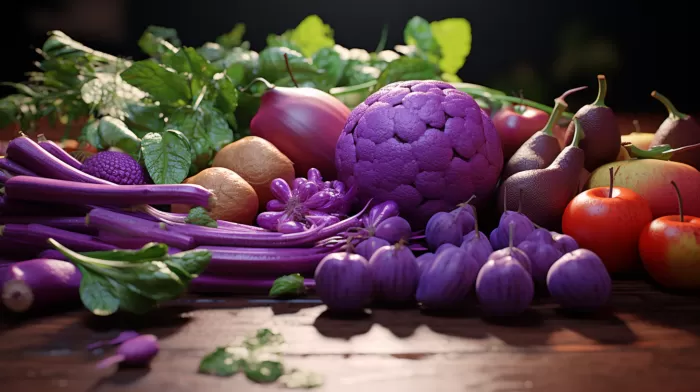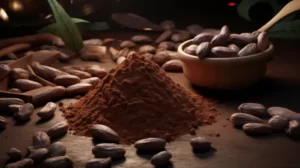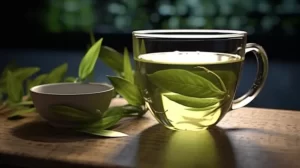Purple and dark blue fruits and vegetables are not just pleasing to the eye, but they also provide a wide array of health benefits for your body. These vibrant foods contain a powerful plant pigment called anthocyanin, a potent antioxidant that shields your body from various chronic diseases such as stroke and cancer. So, let’s dive into the world of purple nutrients and learn more about these colorful, healthy, and delicious guardians of your health.
Anthocyanin: A potent antioxidant
To understand why anthocyanin-rich foods are so beneficial, it’s essential to know a bit about antioxidants. Antioxidants are compounds that neutralize harmful molecules called free radicals – unstable molecules that can damage cells and contribute to aging and diseases.
Anthocyanin is a specific type of antioxidant that gives fruits and vegetables their deep purple, blue, and red hues. Studies have shown that diets high in anthocyanin content can offer protection against several severe health issues, including cancer and heart disease.
Eat the rainbow: 10 purple foods to boost your health
Below is a list of ten purple foods you should consider including in your diet. By adding these anthocyanin-rich foods to your plate, you’ll not only enjoy a more colorful and visually appealing meal, but you’ll also be giving your body a powerful health-boosting punch.
1. Blueberries
Arguably one of the most popular purple foods, blueberries are well-known for their sweet taste and impressive antioxidant content. They are packed with anthocyanins, fiber, vitamin C, and vitamin K, making them an excellent choice for promoting heart health and preventing age-related diseases. For more blueberry health benefits, check out this source.
2. Purple Grapes
Besides their great taste, purple grapes are a fantastic source of anthocyanin. They also contain a compound called resveratrol, which may help prevent heart disease, cancer, and lower inflammation. If you want more information on the health benefits of grapes, you can visit this source.
3. Eggplant
Eggplant’s vivid color comes from the anthocyanin called nasunin, powerful antioxidant that has been shown to protect brain cells from damage and prevent inflammation. The skin of the eggplant is where its rich anthocyanin content can be found, so make use of it in your meals! Check out this source for more health benefits of eggplants.
4. Purple Cabbage
Purple cabbage, also known as red cabbage, is chock-full of anthocyanins and vitamin C. In addition to its antioxidant properties, purple cabbage is also known for its ability to support digestion and reduce inflammation. Learn more about the health benefits of this nutrient-dense vegetable here.
5. Black Rice
Black rice, also known as forbidden rice, has a deep purple hue and a nutty taste, making it an interesting addition to any meal. This ancient grain is packed with anthocyanins, fiber, and essential nutrients like iron, vitamin E, and amino acids. Find out more about the benefits of black rice here.
6. Purple Sweet Potatoes
These eye-catching tubers are full of anthocyanins and have been shown to have anti-inflammatory and anti-cancer properties. Purple sweet potatoes are also a good source of vitamin A, vitamin C, and fiber, making them a star on the dinner table. For more details on the benefits of purple sweet potatoes, visit this source.
7. Purple Cauliflower
Although similar to its white counterpart, purple cauliflower has the added benefit of anthocyanins, thanks to its unique hue. It also contains a variety of nutrients like vitamins C and K, making it a versatile and nutritious choice. You can find more information on the health benefits of purple cauliflower here.
8. Purple Corn
Not only does this unique variant of corn add a pop of color to your meal, but it’s also rich in anthocyanins and provides various health benefits. Purple corn contains antioxidants that help reduce inflammation, improve heart health, and support weight management. Find out more about this fascinating crop here.
9. Purple Asparagus
Similar to green asparagus, the purple variation offers a good source of vitamin A, C, and K, as well as fiber and various antioxidants. However, purple asparagus boasts higher anthocyanin content than its green counterpart, making it an excellent choice for overall health. Learn more about the benefits of this purple vegetable here.
10. Plums
Sweet and juicy, plums are another purple fruit high in anthocyanin content. In addition to these powerful antioxidants, plums are also a source of vitamin C, vitamin K, and fiber. Dried plums, also known as prunes, are beneficial for bone health and maintaining healthy digestion. Find out more about the health benefits of plums and prunes here.
Eating a variety of purple foods rich in anthocyanins can help reduce inflammation, lower your risk of chronic diseases, and promote overall good health. So the next time you’re at the grocery store or local farmers’ market, don’t hesitate to grab some of these vibrant and nutritious purple gems!



